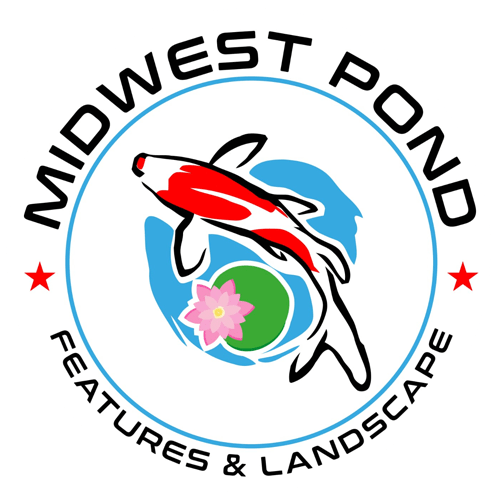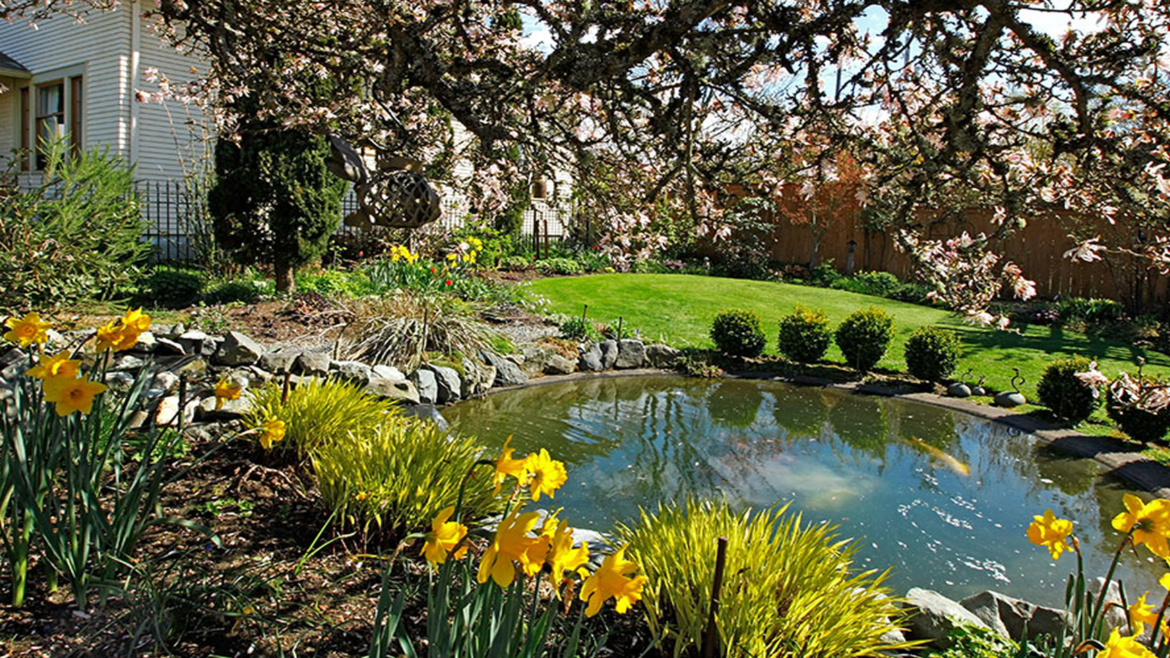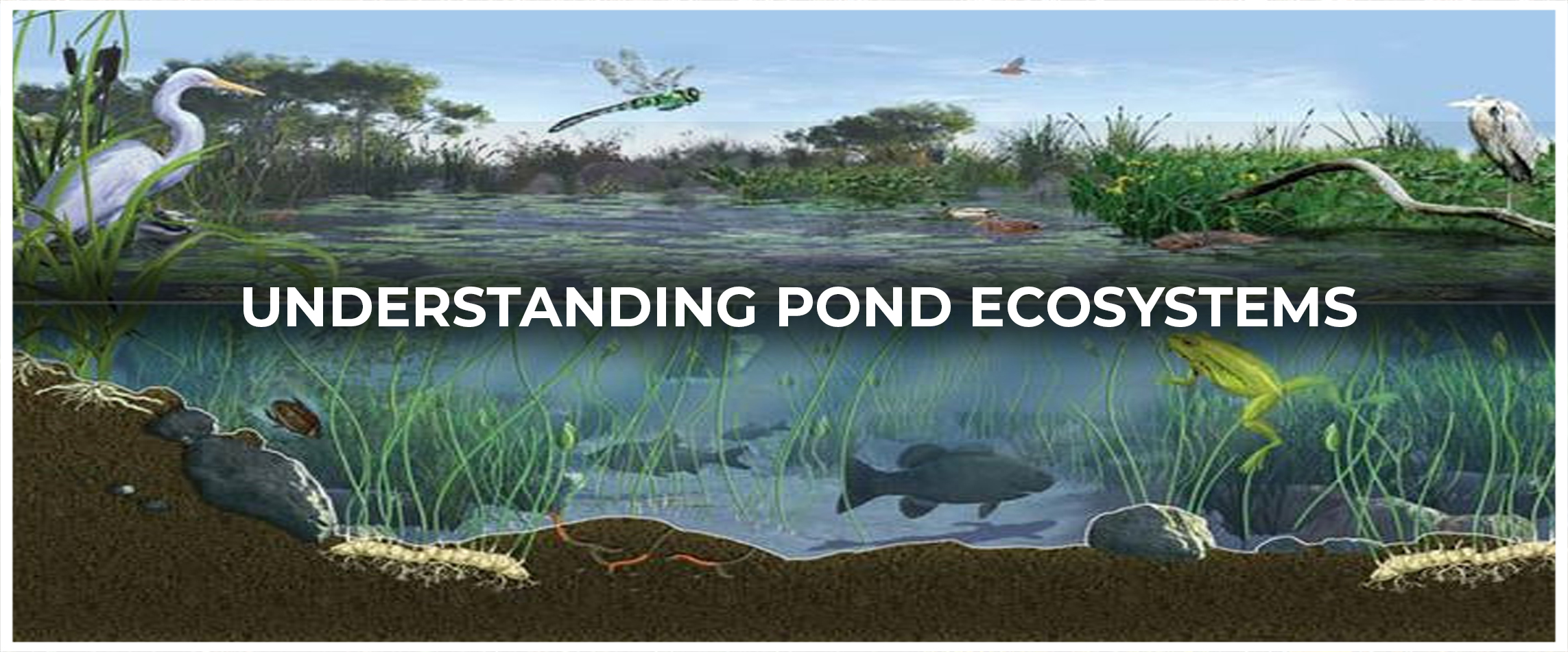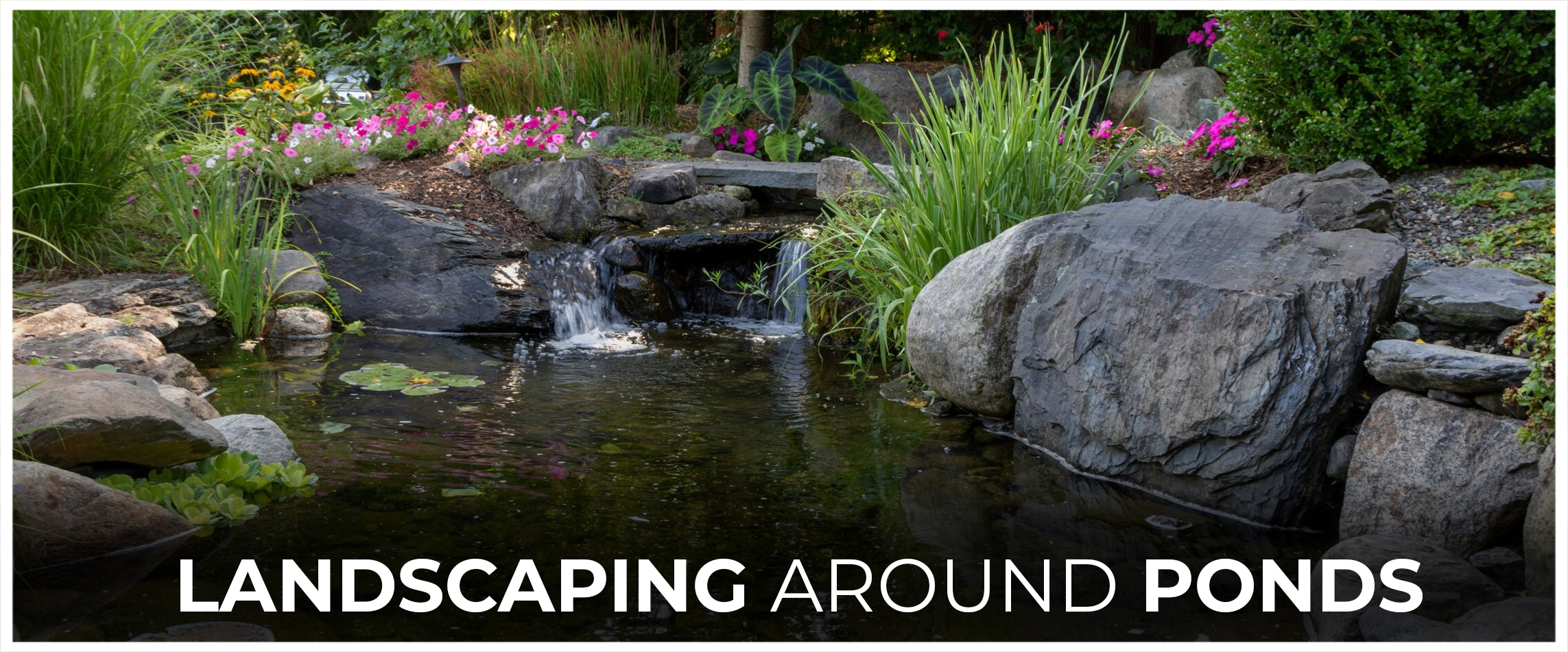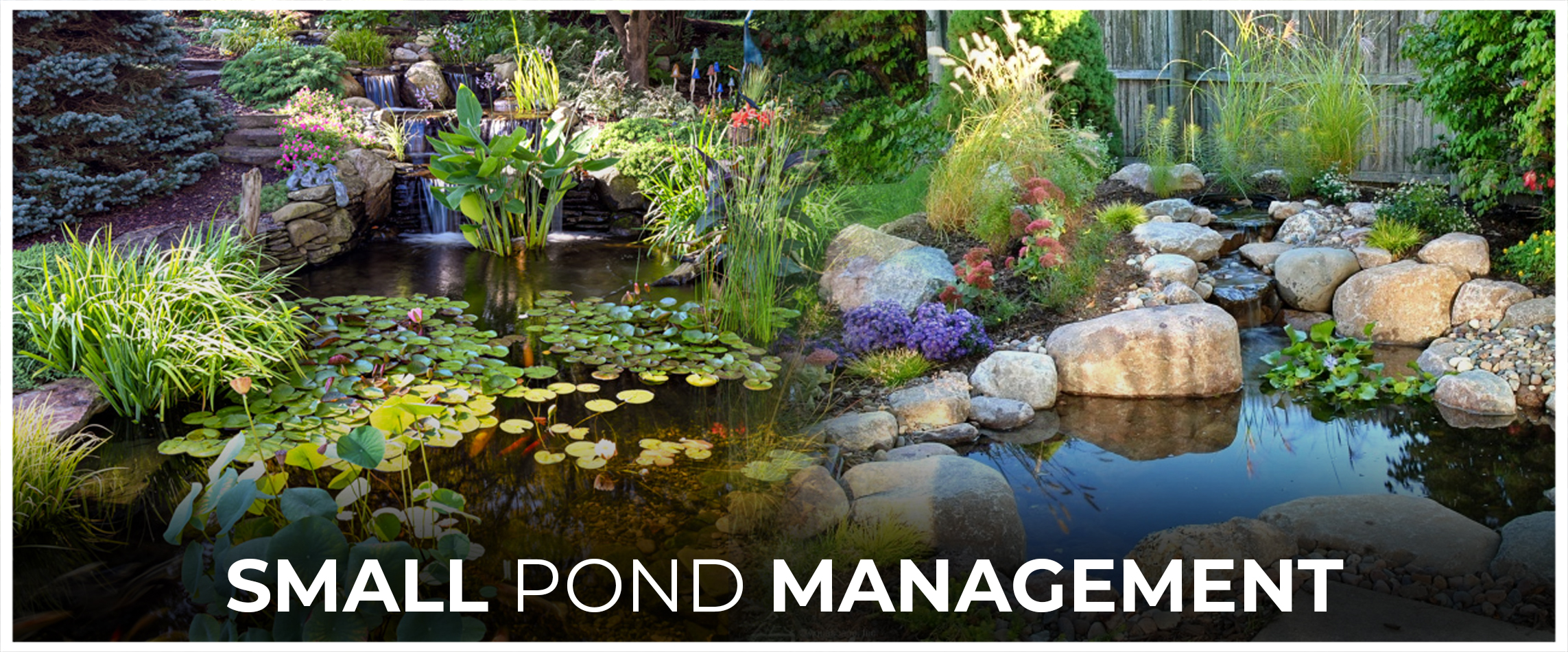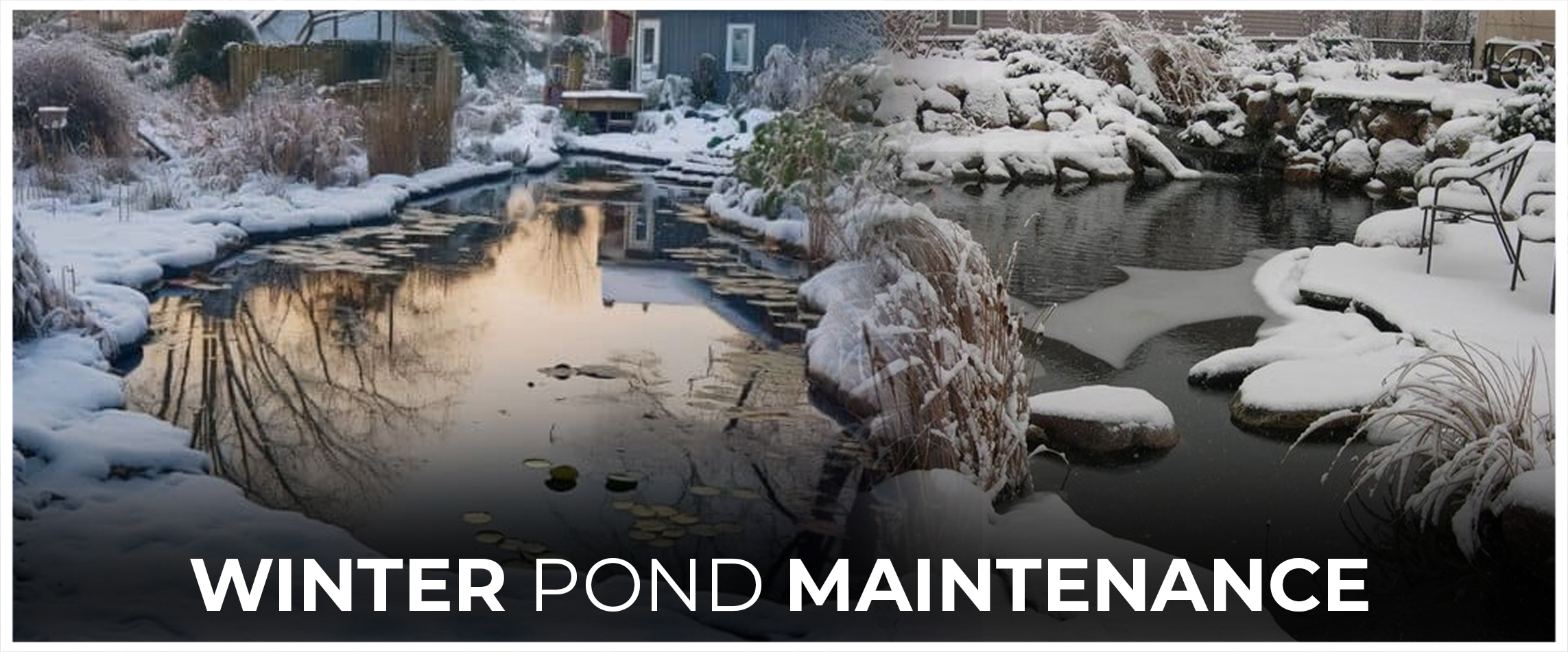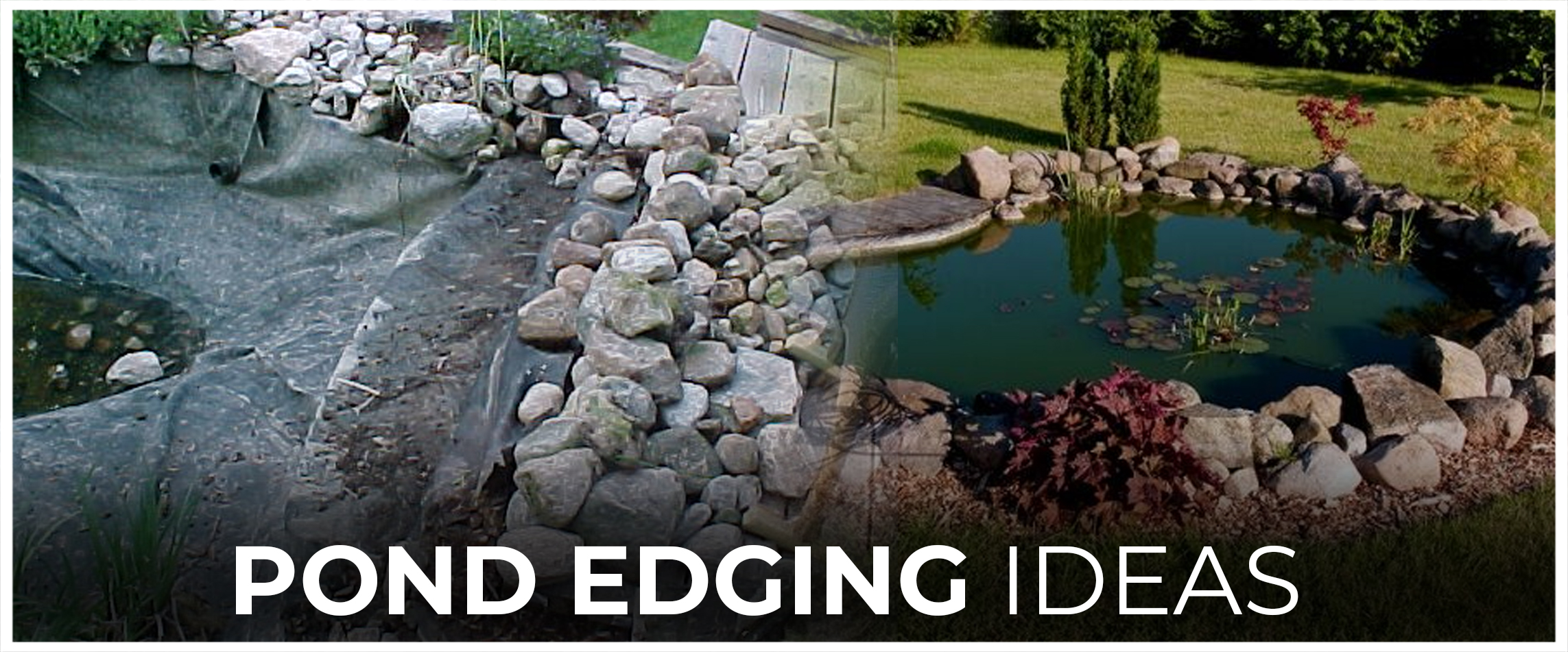Ponds in the landscape are not just pretty; they are also like their own little worlds that must be cared for properly to stay healthy.
Keeping your water feature in good health with regular maintenance is very important, whether it’s a small fish pond or a large water paradise.
In this blog, we will delve into the hidden complexities of pond maintenance – from simple care procedures to sophisticated pond landscaping approaches.
Understanding Pond Ecosystems
Maintenance comes later and before that one must understand that ponds are delicate ecosystems. A healthy pond needs clean water, plants, helpful bacteria, and fish. Every part helps ensure the water is clean and the environment healthy.
Routine Pond Maintenance Tasks
Common pond problems like algae blooms, cloudy water, and stagnation are prevented with regular pond maintenance.
Here’s a checklist of essential maintenance tasks:
Skimming and Debris Removal: Leaves, twigs, and other stuff from the water with a net should be done often.
Cutting Water Plants: Cut extra water plants to keep the ecosystem balanced and prevent too many plants from growing.
Checking Equipment: Check pumps, filters, and other devices to ensure they work correctly. As necessary, clean or change filters.
Water Quality Testing: Check the water’s pH, ammonia, nitrite, and nitrate levels to keep optimal fish and plant conditions.
Algae Control: Algae growth can be controlled by adding beneficial bacteria, using algaecide in moderation, and maintaining nutrient runoff from adjacent areas.
Fish Pond Care
If you have fish in your landscaping pond, you must take extra care to keep them healthy and happy. It can be seen because:
Feeding fish: Give them the right amount of food so they stay healthy and the water stays clean. Too much food can dirty the water and cause health issues for the fish.
Oxygenation: Add an aerator or wellspring to the water to assist it with getting more oxygen, particularly in the late spring.
Fish Wellbeing Observing: Your fish should be watched for symptoms of illness or stress, such as being tired, not eating, or swimming strangely.
Landscaping Around Ponds
The landscape surrounding your pond is crucial for its aesthetic appeal and ecosystem health. The following is the statement of facts.
Pond Edging: The appropriate materials for edging, such as plants, rocks, or stones, prevent erosion and provide a smooth transition from land to water.
Selection of Plants: By the pond, plant various aquatic and terrestrial plants to create wildlife habitats, boost biodiversity, and improve water quality.
Mulching: Mulch should be spread around the pond to keep moisture, keep weeds at bay, and safeguard plant roots.
Seasonal Pond Maintenance
Different seasons bring unique maintenance challenges and opportunities: How people even think about the issues is so abnormal that it would be tough to accept them.
Spring: Perform a complete outdoor pond cleaning, remove debris accumulated over the winter, and split and report aquatic plants where necessary.
Summer: Monitor water temperature and oxygen levels, giving shade to prevent overheating.
Fall: Clean your pond from fallen leaves and other debris to prevent nutrient accumulation; prepare for winter.
Winter: Place heat for the outside pond or deicer to ensure no ice formation and an open opening where some gas exchange can occur.
Troubleshooting Common Issues
Despite your best efforts, you may notice occasional issues such as algae blooms, water clarity problems, or fish health issues. Consult with pond specialists or local garden centers for personalized solutions tailored to your situation.
Small Pond Maintenance
For those with limited space, small backyard ponds can be equally enchanting. Here’s how to manage a small backyard pond maintenance effectively:
Scale-Appropriate Features: Choose plants and fish suitable for smaller environments. Compact water lilies, miniature fish breeds, and small aquatic plants can thrive in limited spaces.
Filtration Systems: Invest in compact and efficient filtration systems for smaller ponds. These systems help keep water clear and maintain a healthy environment for aquatic life.
Creative Design: Use rocks, pebbles, and strategically placed plants to create a visually appealing and space-efficient design. Consider incorporating a waterfall or small fountain for both aesthetics and additional aeration.
Large Pond Maintenance
The scale of maintenance tasks may differ for those with sprawling aquatic landscapes. Here are considerations for maintaining large home ponds:
Aeration Systems: Install robust aeration systems to ensure adequate oxygenation throughout the pond. It is particularly crucial for larger bodies of water with more extensive fish populations.
Water Circulation: Optimize water circulation with strategically placed pumps and fountains to prevent stagnant areas where debris and algae can accumulate.
Professional Assistance: Consult with pond specialists or pond landscaping professionals for extensive ponds. They can provide insights into advanced maintenance techniques and ensure the longevity of your large pond.
Innovative Pond Designs
Experimenting with innovative pond designs can elevate your outdoor space. Here are a few ideas to consider:
Tiered Ponds: Create a visually striking effect by incorporating tiered levels in your pond design. It not only adds visual interest but also promotes natural water flow.
Raised Ponds: Elevate your pond with raised edges to provide a unique perspective and minimize potential debris accumulation.
In-Ground Ponds: While above-ground fish ponds have a charm, in-ground ponds offer a more seamless integration with the surrounding landscape. This design choice can boost the overall aesthetic of your garden.
Winter Pond Maintenance
Winter poses specific challenges to pond owners, and neglecting winter maintenance can have adverse effects. Consider the following tips:
Pond Deicing: Keep the water from freezing in the pond using a pond heater or deicer. It ensures that the right amount of air goes in and out and stops foul gases from building up.
Fish Health: If you have fish in your outdoor pond, watch how they act in the winter. Change when you feed the fish depending on how active they are. Fish are less energetic when colder, so they don’t need as much food.
Protecting Plants: How to take care of a pond plant is essential. Take care of the water plants by cutting them back and covering them to keep them safe from the cold. Move potted plants to a safer place where it’s not too cold.
Personalizing Your Pond Landscape
Your pond is a canvas waiting for your artistic touch. Personalize it by incorporating features like:
Statues and Sculptures: To improve the aesthetic appeal of your pond, place decorative statues or sculptures along its edge.
Night Lighting: Place discreet lighting around the pond to have a magical feel in the night. Solar lights are environmentally friendly.
Bridge or Pathway: If space permits, incorporate a bridge or pathway to form an attractive focal point and make it convenient for home pond maintenance.
Pond Edging Ideas
Choosing the proper edging for your pond adds aesthetic value and serves practical purposes. Explore various pond edging options to complement your landscaping:
Natural Stones: Place natural stones around the pond’s edge for a more organic and rustic appearance. Not only do these stones improve aesthetics, but they also prevent soil erosion.
Bricks or Pavers: Build a neat border around the tree using brick or pavers. This alternative is flexible in design and can blend with the general theme of your garden.
Wooden Edging: A slightly softer touch can be achieved with wooden edging. In particular, using materials such as cedar or redwood creates a cozy and organic atmosphere.
Plants as Edging: Let low-growing plants serve as a living border for your pond. Ornamental grasses, sedges, or ground covers may soften the pond’s edges and, at the same time, increase biodiversity.
Pond Safety Measures
If you have children or pets, pond safety is paramount. Implement the following measures to ensure a secure environment:
Fencing: Install a decorative fence around the pond to restrict access. Choose a design that complements your garden aesthetics while providing a protective barrier.
Shallow Areas: Designate shallow areas or shelves within the pond. These create exciting water features and provide safer zones for children or animals.
Cover Options: Consider using mesh or netting to temporarily cover the pond when not in use, mainly when supervision is limited.
Seasonal Pond Upkeep
Beyond routine maintenance, certain tasks are best performed during specific seasons:
Spring Pond Cleaning: As temperatures rise complete a comprehensive spring cleaning. Remove accumulated debris, trim plants, and inspect equipment to prepare the pond for the active growth season.
Summer Algae Control: Monitor and manage algae growth during the warmer months. Natural solutions like barley straw or aquatic plants help maintain water clarity.
Autumn Leaf Management: Stay proactive in removing fallen leaves during the fall. A layer of netting can be helpful to prevent leaves from settling at the bottom, decomposing, and releasing nutrients.
Pond Renovation and Redesign
As your garden evolves, you may need to renovate or redesign your outdoor pond. Consider the following ideas:
Adding Water Features: Enhance your backyard pond with additional water features like cascading waterfalls, bubbling fountains, or intricate streams. These elevate the visual appeal and contribute to improved water circulation.
Introducing Fish Tunnels or Caves: Create submerged tunnels or caves using rocks or structures to offer fish hiding spots and stimulate natural behaviors.
Upgrading Filtration Systems: Stay abreast of technological advancements in pond filtration. Upgrading your system can significantly improve water quality and reduce maintenance efforts.
Frequently Asked Questions
How to care for a pond?
There are many ways to keep the pond water clear. By cleaning up dirt regularly, using suitable filters, and good bacteria, we can stop algae from growing and keep the water looking clean and clear. Also, consider adding water plants that eat extra nutrients to help clear the water.
Can I create a pond in a small backyard?
Absolutely! Small backyards can integrate delightful ponds. Choose small-sized ponds, use space-saving plants, and consider raised or container-based designs.
With some thoughtful planning and imaginative landscaping, a pond can bring the calming presence of water into even your snug outdoor areas.
What should I do to keep my pond from freezing in the winter?
To avoid pond freezing, install a heater or deicer. These gadgets keep an aperture in the ice, facilitating the escape of gases and oxygen exchange.
Do not try to break the ice manually, as this would be dangerous for aquatic life due to shock waves. Also, monitor fish behavior and tweak feeding times according to wintering activities.
How can I best combat algae in my pond?
Algae control is a multidimensional process. Consider adding beneficial bacteria to balance the nutrient levels and form a balanced ecosystem. Employ algaecides selectively, preferring natural ones or those that are pond-friendly.
Effective algae control requires proper filtration, the appropriate plant selection, and the minimization of nutrient runoff from surrounding areas.
Wrapping It Up
Building and maintaining a landscape pond is a challenging task. It takes devotion, knowledge, and an unmatched love for nature’s intricacies.
If you adhere to these principles and remain vigilant in your pond maintenance, a thriving aquatic habitat that enhances the serenity of nature while beautifying your outdoor space will be created.
Remember that a properly kept pond is an ornament and living artwork that brings life to the landscape and people who use this masterpiece.
